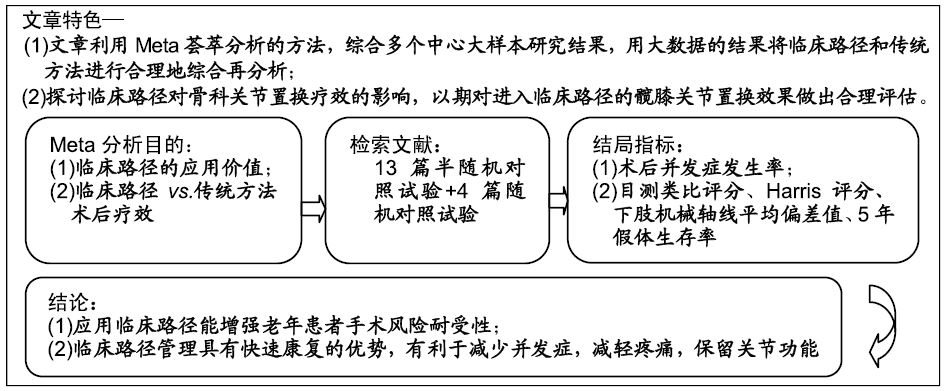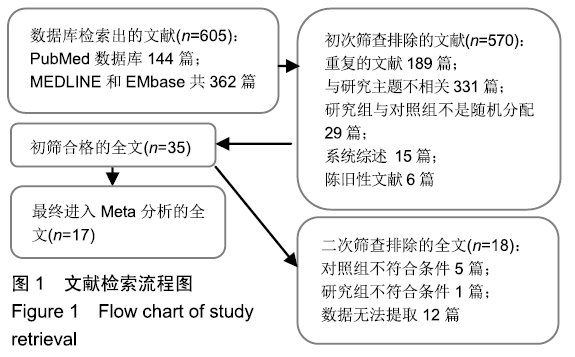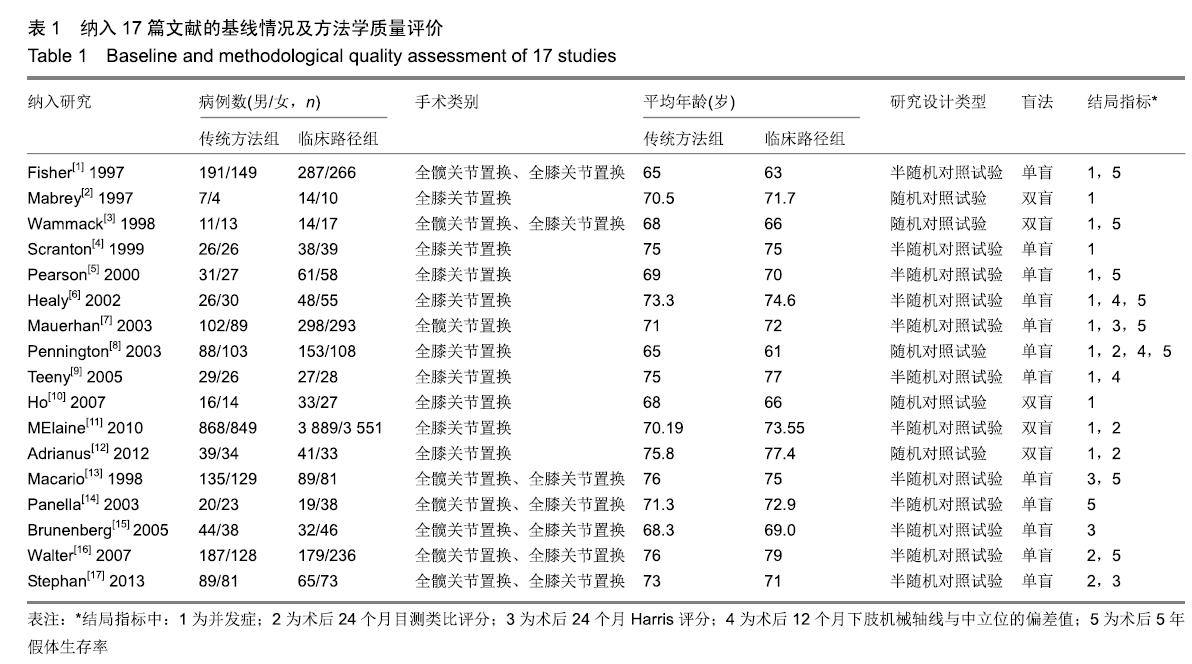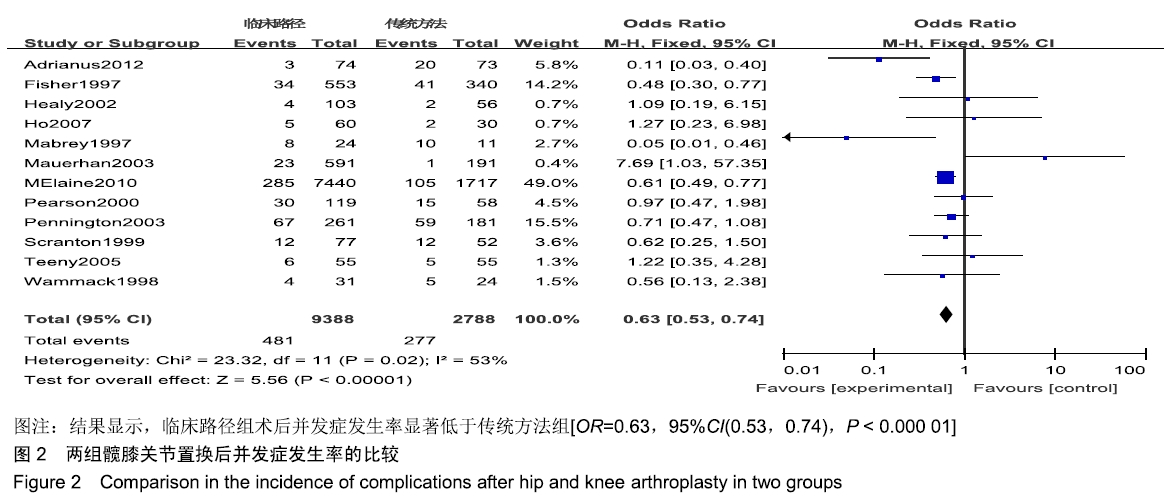中国组织工程研究 ›› 2020, Vol. 24 ›› Issue (3): 422-427.doi: 10.3969/j.issn.2095-4344.2416
• 骨与关节循证医学 evidence-based medicine of the bone and joint • 上一篇 下一篇
髋膝关节置换应用临床路径与传统方法比较的Meta分析
董 锐1,林汉生2
- 1滁州市第一人民医院骨四科,安徽省滁州市 239000;2暨南大学医学院医学统计学教研室,广东省广州市 510632
Clinical pathways in total hip or knee arthroplasty as compared with traditional pathways: a meta-analysis
Dong Rui1, Lin Hansheng2
- 1Fourth Department of Orthopedics, Chuzhou First People’s Hospital, Chuzhou 239000, Anhui Province, China; 2Department of Statistics, Medical College of Jinan University, Guangzhou 510632, Guangdong Province, China
摘要:

文题释义:
背景:髋膝关节置换已在各级医院普遍开展且手术量逐年增加,手术方法及技巧已发展至瓶颈,所以推广临床路径是目前提升髋膝关节置换临床疗效简单且行之有效的方法。
目的:系统评价髋膝关节置换应用临床路径与传统方法效果的差异。
方法:计算机检索MEDLINE、Cochrane、Embase、CNKI 数字图书馆等数据库,并手工检索查找有关比较进入临床路径与接受传统医疗护理方法髋膝关节置换患者的临床试验研究。由2名评价员独立筛查试验、提取资料和评估方法学质量,采用Cochhrane 协作网提供的RevMan 5.0软件进行Meta分析。
结果与结论:①共纳入符合研究设计标准的临床试验17篇,其中13 篇半随机对照试验,4 篇随机对照试验;②传统方法组的并发症发生率高于临床路径组[OR=0.63,95%CI(0.53,0.74),P < 0.000 01];③目测类比疼痛评分[MD=1.49,95%CI(0.69,2.85),P=0.001]、术后Harris 髋关节评分[MD=19.31,95%CI(-13.98,-4.92),P < 0.000 1]、5年假体生存率[OR=0.59,95%CI(0.36,0.98),P=0.04]临床路径组优于传统方法组,差异有显著性意义;④2组全膝关节置换后下肢机械轴线平均偏差值比较差异无显著性意义[MD=0.00,95%CI(-0.14,0.14),P=0.99];⑤结果表明,与传统技术相比,进入临床路径的髋膝关节置换患者能得到更好的临床疗效,并发症更少,术后关节功能更佳。ORCID: 0000-0002-4655-6659(董锐)
中国组织工程研究杂志出版内容重点:人工关节;骨植入物;脊柱;骨折;内固定;数字化骨科;组织工程
中图分类号:






